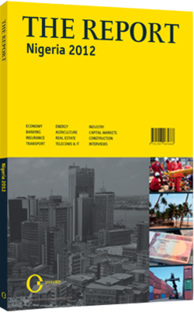A clear message: Innovations in advertising open up new avenues
It is difficult to travel around Nigeria without noting the sheer volume of advertising space, on billboards, over the airwaves and in print publications. Glossy magazine ads target consumer products for high-end clients, while billboards promote mobile networks. However, Nigeria has felt the effects of the global economic downturn with some of the sector’s main advertisers becoming more reluctant to place new bookings. The sector also suffers from a lack of clear numbers.
SECTOR REGULATION: According to the Association of Advertising Agencies, around 100 advertising firms are active in the market for broadcast and print advertisements, with a number of international names such as Saatchi & Saatchi and J Walter Thompson present. The sector is overseen by the Advertising Practitioners Council of Nigeria (APCON), which was founded in 1988 by six sectoral associations and is responsible for determining the classification of advertising agencies and regulating sector practice.
A total of 124 outdoor firms were operating in 2005 according to mediaReach OMD, a Nigerian market research company. However, the number declined after the Lagos State Signage and Advertising Agency (LASAA) was established in 2006. LASAA is responsible for regulating outdoor advertising in Lagos state, banning all unauthorised billboards and posters. Lagos had 66 active outdoor firms in 2009, according to Makanjuola Alabi, managing director of LASAA.
SECTOR SIZE AND PRICES: According to Longley Evru, vice-president of the Association of Advertising Agencies of Nigeria, agency billing for 2008 was estimated to be N35bn ($224m). MediaReach OMD ventured that above-the-line advertising expenditures, which consist of the total amount of spending in traditional mediums, to be worth N40bn ($256m) in 2007, with television accounting for 51.4%, followed by radio at 18.8%, outdoor at 17.8% and print at 12%.
The landscape looks slightly different when exposure is measured. In a survey commissioned by Lagos-based Media Planning Services, of the six existing mediums for advertising in Nigeria, radio had the highest level of penetration, with an audience covering an estimated 95.7% of the adult population in 2010. Television followed shortly behind, with a 95.1% penetration, while outdoor and out-of-home signage register 75.6%, magazines 53.5%, newspapers 47% and online 15.1%. Lagos saw the highest penetration of media vehicles, with television alone touching 99.1% of the population.
With the lack of transparency over audience figures, pricing varies wildly. A 30-second television spot on one of the main private networks, for example, can cost anywhere from N70,000 ($448) to N200,000 ($1280); similarly, radio adverts for 30-second spots can cost between N4000 ($26) and N7000 ($45).
For a long time, one of the biggest spenders in Nigeria was the government, which had a particularly sizeable presence in the print sector. However, the private sector has started to take an increasingly active role, with telecoms companies topping the list. Banks and fast-moving consumer good producers follow closely behind. However, as a result of the domestic banking crisis, as well as the turmoil on the global markets, anecdotal reports indicate spending by two of the three largest industries has stagnated.
INNOVATION: Given the surfeit of advertisements in Nigeria’s current media vehicles, a number of advertising firms are now looking to diversify their presence by exploiting new mediums or offering a twist on existing ones. While online exposure remains relatively limited due to the low level of internet penetration, online content is rapidly emerging as an attractive space for advertising sales. A weekly rate for a leader advertisement on the website of national newspaper Punch, for example, can cost up to N200,000 ($1280).
Mobile-to-mobile, SMS and GPRS advertising is beginning to take off. Advertfarm, a Lagos-based start-up based, has unveiled a mobile content platform that allows for subscriber advertising services. Launched in April 2009, it offers advertisers the ability to send adverts via SMS to pre- and post-pay mobile phones.
You have reached the limit of premium articles you can view for free.
Choose from the options below to purchase print or digital editions of our Reports. You can also purchase a website subscription giving you unlimited access to all of our Reports online for 12 months.
If you have already purchased this Report or have a website subscription, please login to continue.

